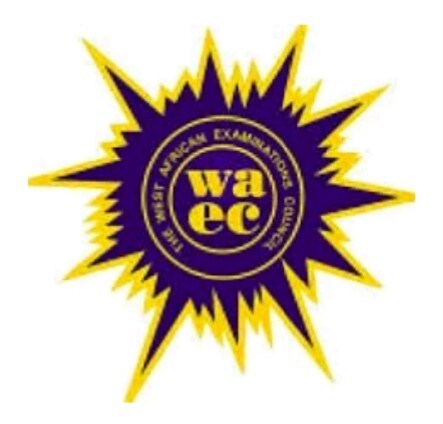If you are preparing for the West African Examination Council (WAEC) Picture Making exam, it is essential to familiarize yourself with the official syllabus.
This syllabus serves as a valuable resource, providing you with the necessary guidance on the topics to study.
About WAEC Syllabus for Picture Making 2024/2025
In this blog post, we will explore the aims and objectives of the Picture Making syllabus, the exam format, and the various topics covered.
Aims and Objectives
The Picture Making syllabus aims to assess your knowledge and skills in both theoretical and practical aspects of Picture Making. The main objectives of the examination are as follows:
(i) Assessing your knowledge and competence in utilizing local resources for Picture Making, fostering personal development and contributing to nation-building.
(ii) Testing your understanding and appreciation of Picture Making as an art form.
(iii) Evaluating your knowledge and understanding of utilizing computer tools in Picture Making.
(iv) Assessing your awareness of different career and job opportunities in the field of Picture Making.
Examination Format
The Picture Making examination consists of three papers, namely Papers 1, 2, and 3. All three papers are mandatory and must be taken. Here’s a breakdown of each paper:
PAPER 1: This paper consists of forty multiple-choice objective questions to be answered within 50 minutes, carrying a total of 40 marks.
PAPER 2: In this paper, you will encounter six essay-type questions. You are required to answer four questions within 2 hours, accounting for 60 marks.
PAPER 3: The practical component of the exam, where you will execute two projects and choose one to complete within five days. You will work for six hours each day. The paper carries 80 marks, with an additional 20 marks for designing sketches and preparatory notes.
Syllabus Topics
The Picture Making syllabus covers a wide range of topics, including:
- Picture making as a vocation and its importance, emphasizing career opportunities and studying the works of contemporary Ghanaian artists.
- Analysis of the social and economic importance of picture making in Ghana.
- Basic design and composition in picture making, covering definition, planning, principles, and components of a composition.
- Drawing/illustration, exploring tools and materials, types of drawings, and the purpose and scope of illustration.
- Painting, including the identification of tools and media, theory of color, painting techniques, and different styles of painting.
- Printmaking, discussing the principles of printmaking as an aspect of picture making and exploring various techniques.
- Collages, mosaics, montage, appliqué, marquetry, and montages, defining these techniques and explain the planning and execution processes.
- Mural painting, frieze, fresco, and panel work, covering concepts, styles, composition principles, and execution techniques.
- Body art, studying body decoration, its history, significance, and different types such as scarification, tattooing, coiffure, and costume.
- Color, including its definition, classification, concepts, and significance.
- History of painting, exploring its scope, characteristics, notable artists, and contributions to the development of art.
- Entrepreneurial skills in practice, introducing marketing concepts and basics of costing, pricing, and marketing art products.
- Exhibition, studio, gallery, and museum, focusing on the planning, mounting, and significance of exhibitions, as well as the importance of studios, galleries, and museums.
- Digital painting, understanding the concepts, principles, and components of using computers as drawing tools with available software.
FAQs on WAEC Syllabus for Picture Making 2024/2025
What are the key topics covered in the WAEC Picture Making syllabus for 2024/2025?
The WAEC Picture Making syllabus for 2024/2025 covers a variety of topics, including but not limited to:
- Materials and Tools for Picture Making: Understanding different media, tools, and surfaces used in picture making.
- Techniques and Processes: Exploration of methods such as drawing, painting, printing, and other creative processes.
- Artistic Composition and Design: Study of composition rules, elements of design, and arrangement of objects.
- Cultural Art Forms: Incorporation of traditional and contemporary art forms from various African cultures.
- Critical Appreciation: Analyzing and interpreting artworks, including their social, cultural, and historical contexts.
How can students prepare effectively for the practical aspect of the Picture Making exam?
To prepare for the practical aspect of the WAEC Picture Making exam, students should:
- Practice Regularly: Engage in frequent drawing, painting, and designing to improve skills.
- Study Past Questions: Review and practice past WAEC Picture Making practical questions to understand the format and expectations.
- Work on Time Management: Develop speed and accuracy in completing practical tasks within the time limit.
- Use Varied Media: Experiment with different tools and media such as pencil, charcoal, watercolor, and acrylics to enhance versatility.
- Attend Workshops or Art Classes: Practical exposure through workshops or art classes can help students refine their techniques and gain constructive feedback.
Where can students access the WAEC Picture Making syllabus for 2024/2025?
The WAEC Picture Making syllabus for 2024/2025 can be accessed through:
- WAEC Official Website: Visit the official website of the West African Examinations Council (WAEC) at www.waecdirect.org or www.waecgh.org for syllabus updates.
- School Guidance Offices: Schools typically provide students with copies of the syllabus as part of their preparation materials.
- Educational Publishers: Some local bookstores or online educational platforms may provide printed or digital copies of the WAEC syllabus for Picture Making.
Conclusion
Studying the WAEC Picture Making syllabus is crucial for your exam preparation.
It provides a comprehensive outline of the topics you need to cover and ensures that you are well-equipped to succeed in the examination.
Make sure to allocate sufficient time to study each topic thoroughly and practice practical aspects such as drawing, painting, and executing projects.






